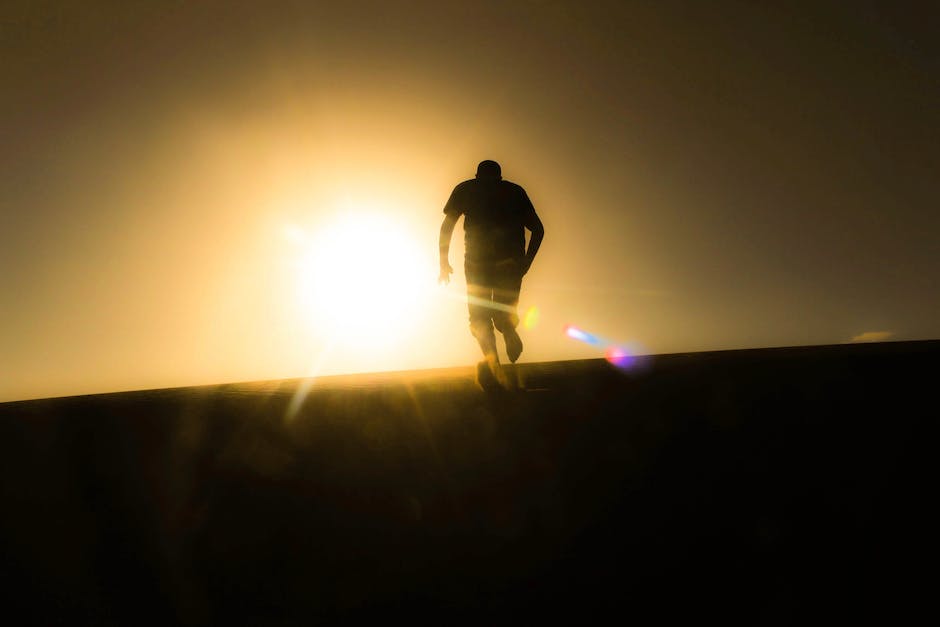
“Trail running lights illuminate the path to adventure.”
Gliding Through Dark Trails: Trail Running Lights
Trail running is an excellent way to explore nature, keep fit, and unwind after a long day’s work. With the right gear, including the right shoes, clothes, and especially trail running lights, you can make your running experience more enjoyable, safe, and memorable. Trail running at night may be challenging, but it is also a unique experience that requires the right lighting for your safety and convenience. In this article, we will explore everything you need to know about trail running lights, including the types available, how to choose the right one, and the top picks in the market.
Types of Trail Running Lights
Trail running lights come in different types, each with its advantages and limitations. Understanding the types available will help you choose the perfect one for your needs. Here are the most common ones:
Headlamps
Headlamps are the most popular type of trail running lights. They are lightweight, hands-free, and versatile, making them ideal for trail running. They are worn on the head, and the light beam follows the direction of the head. They are adjustable, allowing you to focus the light beam where you need it. Headlamps come with different brightness levels, and some have a red light mode for night vision. They can also be worn over hats or helmets for extra comfort.
Handheld Flashlights
Handheld flashlights are another type of trail running lights. They are compact, lightweight, and easy to carry around. They come in different brightness levels, and some have adjustable focus, strobe, or SOS modes. They are suitable for short-distance runs or when you need to inspect a specific area. Some handheld flashlights also have a strap that allows you to attach them to your wrist for hands-free use.
Chest Lights
Chest lights are a new type of trail running lights that are gaining popularity. They are worn on the chest, providing a broader and more even light coverage than headlamps. They are also hands-free, allowing you to use your hands for other activities. Chest lights come with different brightness levels, and some have a red light mode for night vision. They are suitable for long-distance runs or when you need better visibility.

How to Choose the Right Trail Running Light
Choosing the right trail running light can be overwhelming, given the different types and features available. However, there are some factors that you can consider to help you make the right decision:
Brightness
The brightness of the trail running light is crucial, especially when running in dark or challenging terrains. Look for a light with at least 100 lumens for short-distance runs and 200-300 lumens for long-distance runs. However, brightness should not be the only factor to consider, as some lights may cause glare or affect your night vision.
Battery Life
Battery life is another critical factor to consider when choosing a trail running light. Look for a light with a battery life of at least 4-5 hours for short-distance runs and 8-10 hours for long-distance runs. Also, ensure that the batteries are easily replaceable, rechargeable, or have a backup plan if they run out.
Weight and Comfort
The weight and comfort of the trail running light can affect your running experience. Look for a light that is lightweight, compact, and comfortable to wear for an extended period. The light should not bounce, slip, or cause discomfort when running.
Visibility and Durability
The visibility and durability of the trail running light are also crucial factors to consider. Look for a light that is waterproof, shockproof, and durable enough to withstand harsh terrain conditions. The light should also have a long-distance visibility of at least 50-100 meters to alert you of any obstacles or hazards ahead.
Top Picks for Trail Running Lights
Now that you know the types of trail running lights and how to choose the right one let’s look at the top picks in the market:
Black Diamond Spot 350
The Black Diamond Spot 350 is a popular headlamp with a maximum brightness of 350 lumens. It has a red light mode for night vision, a waterproof rating of IPX8, and a battery life of up to 200 hours. It is lightweight, compact, and comfortable to wear, making it ideal for trail running.
Nathan Neutron Fire
The Nathan Neutron Fire is a versatile chest light with a maximum brightness of 115 lumens. It has a red light mode for night vision, a waterproof rating of IPX4, and a battery life of up to 30 hours. It is lightweight, comfortable to wear, and provides a broader and more even light coverage than headlamps, making it ideal for long-distance runs.
BioLite HeadLamp 750
The BioLite HeadLamp 750 is a high-end headlamp with a maximum brightness of 750 lumens. It has a rechargeable battery, a waterproof rating of IPX4, and a battery life of up to 150 hours. It is lightweight, comfortable to wear, and has an adjustable front panel that allows you to focus the light beam where you need it.
The Future of Trail Running Lights
Trail running lights have come a long way, and new technologies are emerging every day to make them more efficient, safe, and comfortable. Here are some future possibilities:
Solar-Powered Trail Running Lights
Solar-powered trail running lights may become popular in the future, given the increasing demand for sustainable and eco-friendly products. These lights will use solar panels to charge the batteries during the day and provide light at night, eliminating the need for regular battery replacements.
Smart Trail Running Lights
Smart trail running lights with artificial intelligence and sensors may also become popular in the future. These lights will adjust their brightness, color, and focus based on the terrain, weather, and user preferences. They may also include GPS tracking, distance and speed monitoring, and other features to enhance the running experience.
Conclusion
Trail running lights are essential gear for any trail runner, whether you run at night or day. They make your running experience safer, more comfortable, and more enjoyable. When choosing a trail running light, consider the type, brightness, battery life, weight and comfort, visibility, and durability. The Black Diamond Spot 350, Nathan Neutron Fire, and BioLite HeadLamp 750 are some of the top picks in the market, but there are also other options to explore based on your needs and preferences. As technology advances, we can expect more innovative and exciting trail running lights in the future.

Frequently asked questions
What are the types of trail running lights?
The types of trail running lights include headlamps, handheld flashlights, and chest lights. Headlamps are worn on the head, while handheld flashlights are compact and easy to carry around. Chest lights are worn on the chest and provide a broader and more even light coverage than headlamps.
How can I choose the right trail running light?
To choose the right trail running light, consider factors such as brightness, battery life, weight and comfort, visibility, and durability. Look for a light with at least 100 lumens for short-distance runs and 200-300 lumens for long-distance runs. The battery life should be at least 4-5 hours for short-distance runs and 8-10 hours for long-distance runs. The light should be lightweight, compact, comfortable to wear, waterproof, and durable enough to withstand harsh terrain conditions.
What are the top picks for trail running lights?
The top picks for trail running lights are the Black Diamond Spot 350, Nathan Neutron Fire, and BioLite HeadLamp 750. The Black Diamond Spot 350 is a popular headlamp with a maximum brightness of 350 lumens, while the Nathan Neutron Fire is a versatile chest light with a maximum brightness of 115 lumens. The BioLite HeadLamp 750 is a high-end headlamp with a maximum brightness of 750 lumens and a rechargeable battery.
What is the future of trail running lights?
The future of trail running lights may include solar-powered lights and smart lights with sensors and artificial intelligence. Solar-powered lights will use solar panels to charge the batteries during the day and provide light at night, while smart lights will adjust their settings based on the terrain, weather, and user preferences.
Why are trail running lights important?
Trail running lights are important for safety, comfort, and convenience. They provide visibility in dark or challenging terrains, alert the runner of any obstacles or hazards ahead, and enhance the overall running experience. With the right trail running light, runners can explore nature, keep fit, and unwind after a long day’s work.
